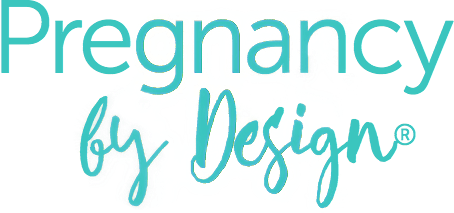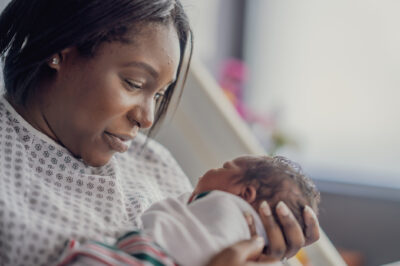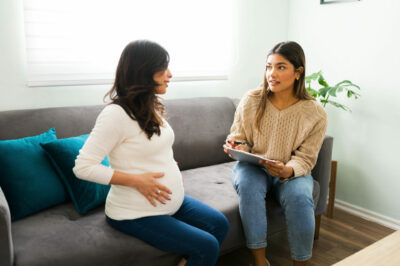Homebirth is on the rise in the US. In fact, according to the CDC, homebirths increased nearly 20% between 2019 and 2020.
So while homebirths are still not the norm (around 1.26% of all births), more American women are choosing to give birth at home. This shift can be largely attributed the covid pandemic but homebirths were increasing even before the pandemic. There are many reasons families are choosing to birth at home.
Top Reasons that Families Choose Homebirth
1. To avoid risks/interventions related to hospital births
Most women planning a homebirth have done a good deal of research and have weighed the risks and benefits of each choice. Research has consistently shown that low-risk women in the US who chose home or birth center birth have lower rates of intervention when compared to those who chose hospital birth. These interventions include cesarean birth, operative vaginal delivery (forceps/vacuum), induction/augmentation of labor, episiotomy, and lower rates of intervention-related maternal morbidity, such as infection, postpartum hemorrhage, and genital tract tearing (source).
2. They had a bad or traumatic birth experience in the past
For these women, dissatisfaction with a previous hospital birth led them to choose a homebirth. They may have felt unheard, unsupported or coerced and have had to process their birth experience and want to avoid having that happen again. One out of every 3 women experiences a traumatic birth in the US.
3. Autonomy – more freedom & control
Many women choose to birth at home to have more control over their labor. At home they can go where they want when they want. They can eat and drink when and what they want. They can move however their body and baby need them to move.
Labor and birth outside the hospital often progresses more easily, partly because labor is less likely to be disturbed.
4. They desire to be a partner in their care
Homebirth providers usually treat families as partners in care – educating them so that they can make informed choices. Prenatal visits tend to be longer and are as much about monitoring physical health as they are about the woman’s wellbeing. By the time she is ready to give birth, she is well-prepared and has built a relationship of trust with her provider. For this reason, families tend to be more satisfied with their birth experience
5. Desire to deliver in comfort of home
Some women choose homebirth for the sheer comfort, knowing they will have so many more things how they like them at home. To them the hospital’s bright lights, constant monitoring and interruptions seem counter-productive to encourage labor.
They know that hormones work much better at home. For instance Oxytocin, essential to labor, causes the uterus to contract and helps labor to progress. This hormone, usually present at intimate moments during our life, is sometimes called the ‘shy hormone’ because it does not like being observed.
6. Ability to choose who is present during labor & birth (family, friends, doula)
The ability to have whomever they want at their birth is a big reason a lot of families choose out of hospital birth. Partners often feel more included in a home setting and children can be involved if the family wishes. Many families were/and still currently are forced to shift gears during covid due to hospital visitor policies (i.e.- grandma can’t visit baby at hospital). A good example is the restriction of labor doulas in many hospitals across the country.
7. They live in a rural area and lack access to a hospital
Families with limited options, may choose homebirth simply because there is no hospital or birthing center within a reasonable distance. Rural providers become absolutely essential in these situations.
Who is Having Homebirths?
Research has found that those choosing to birth at home are most often:
- White women
- Married
- Highly educated (58% had finished 4 year college)
- Have given birth before
This is not to suggest that women of other ethnicities do not desire to choose homebirth, rather they may lack access to homebirth.
A recent study found that “black and white women (and, indeed, women of all ethnicities in our study) planning hospital births expressed positive feelings toward out-of-hospital birth at similar rates. These positive feelings were consistent across groups of black and white pregnant women at 11.5% and 13.1% respectively, a difference that was not statistically significant. Overall, 80 out of 634 women, or 12.6%, said they would feel safest giving birth outside of a hospital, either at a birth center or at home or another location”(source).
What Caused the Decline in Homebirth?
For centuries women gave birth at home. Around 1900, there was a shift toward hospital birth. With the rise of germ theory, obstetrical forceps, and the availability of drugs for pain relief, birth in hospital became more and more popular. Midwives and homebirth came to be seen as dangerous.
Modern maternity care has provided some labor and life-saving advancements. Yet at the same time, birth has become increasingly (and many times unnecessarily) medicalized. When birth is approached as a medical event it can lead to interventions, that would otherwise be good & necessary, being overused and creating problems that would otherwise not exist.
Homebirth symbolizes a struggle (both in the past and present) to practice Midwifery in a culture that embraces technology and medical interventions —a value system which poses threats and places restrictions on individuals and the Midwifery profession.
Some believe that the pendulum of intervention has swung too far – leading to unnecessary interventions. For instance, the rate of cesarean sections in the US doubled between 1970 and 2010. American women today are 50% more likely to die in childbirth than their mothers (source). In an effort to avoid seemingly unnecessary intervention, it is not surprising that some women have turned again to home birth.
Who is a Good Candidate for Homebirth?
Women who are low-risk are good candidates. Low risk typically means:
- Pregnant with a single baby*
- Baby is head-down at term*
- No serious medical conditions such as heart disease, high blood pressure, diabetes, gestational diabetes, blood clotting disorder or preeclampsia
- Has made an informed choice to deliver at home
- Lives a healthy lifestyle
- No placenta previa at beginning of labor
- No prior cesarean section -(note: some guidelines allows for women with one prior cesarean who had a low transverse incision)
*There are providers, although few and far between, who will attend a twin or breech delivery. Dr. Stu Fischbein is one of these providers.
Risk Factors of Home birth
A family’s choices matter even more with homebirth because they are making a choice against popular culture. Homebirth, like any birth, comes with risk. There are ways to limit those risks.
Families with Higher Risks
Though it’s possible for any birth to go beautifully at home, and we know many lovely stories of safe vaginal breech births at home and others, the risks of homebirth are higher if you:
- Are diabetic or have uncontrolled gestational diabetes
- Have high blood pressure
- Experience preterm labor
- Are carrying multiples or a breech baby
- Plan a VBAC (vaginal birth after cesarean), also referred to as HBAC (home birth after cesarean)
The Partner is Not on Board
We’d also encourage a woman to carefully consider her choice to have a homebirth if her partner is uncomfortable with it. If the partner is uncomfortable and she’s laboring, their discomfort may get to her. Note: with good evidence-based education, many partners will come on board. In fact, many partners end up loving the homebirth more than mom because they are in a comfortable environment and are often free to have a larger support role.
Benefits of Homebirth
Besides the environmental and comfort concerns mentioned previously, there are a few other aspects to consider.
- Decreased likelihood of cesarean and other intervention
- Increased comfort and freedoms
- Avoiding the germs and exposure of a hospital
- Interventions are generally avoided
- You choose your providers and that’s who shows up. Not people you haven’t met
- Freedom for cultural or religious practices
- Greatly increased privacy
- Increased options such as waterbirth (you or your Midwife provide the birth pool), delayed cord cutting, immediate skin-to-skin
- Smoother breastfeeding initiation & increased likelihood of breastfeeding success (source)
- Lower risk of perineal injury (tearing) (source)
- Babies born at home are thought to be exposed to a more diverse, healthy microbiome than in the hospital setting. Learn more about how to get a good microbiome for your baby
Some birth blogs mention the fact that the cost of homebirth is less than hospital birth. This is true, but hospital births are more often covered by insurance. You can expect to pay around $3,000-$8,000 for prenatal, birth, and postpartum care for a home birth Midwife.
Many women have had their homebirths covered by asking for an exception so that is a good place to start. Some Midwives will help determine if insurance will cover their services. Some non-traditional forms of “insurance” such as Samaritan Ministries (members share in each other’s health insurance) will cover the cost of a homebirth and may even cover the cost of a doula.
There is also an economic benefit of out-of-hospital birth for society at large. According to Frontiers in Sociology
“Economic analysis suggests that having an additional 10% of deliveries take place in private homes or freestanding birth centers could save almost $11 billion per year in the United States without compromising safety.”
Choosing a Birth Provider
The most important decision (no matter the place of birth) is the Midwife or doctor a woman choses to attend her. Midwives (and the few obstetricians that offer home birth) differ in their philosophy of birth, their style of care, the tests and checks they do, the supplies they carry with them, and the reasons they would encourage transfer to the hospital. The family should feel comfortable to ask lots of questions and make sure the provider is a good fit for their family.
Midwives
Midwives are specialists in normal pregnancy and birth. Research has shown that Midwifery care reduces the rates of unnecessary interventions and improves outcomes for moms and babies (source). Midwives deliver babies at home, at birth centers, and at the hospital. There are several different types of Midwives that can attend homebirths. Learn about the different types of Midwives here.
Obstetricians
Obstetricians and Gynecologists (ob gyns) are surgeons specializing in the pathology of women’s reproductive organs. OB’s typically deliver babies at the hospital. However some doctors deliver outside of the hospital. Many wonderful OB’s who practice in the hospital work as backup doctors for local Midwives who attend homebirth. Incidentally, that’s a decent way to find an OB who respects the natural process of labor and a family’s right to informed decisions about their bodies.
In many countries, including the UK, everyone is assigned a Midwife unless their pregnancy becomes higher risk. An OB is only called when there is a problem, which is what doctors did for many years—answer the calls of Midwives with very difficult cases.
You can learn more about the differences between Midwives and OBs here.
For those with low-risk pregnancies who are expecting a normal birth, a Midwife is a good choice.
For those experiencing a higher risk pregnancy, such as high blood pressure, unusual fetal growth, uncontrolled diabetes, or some other chronic health conditions a homebirth may not be a safe choice.
Medical Intervention in Homebirth
Midwives and doctors who attend home birth are much less likely to offer intervention. Because they’re specialists in normal birth, they know the normal unfolding of birth and its many variations very well. When something strays from normal, they know it immediately and can offer an appropriate intervention.
Your Midwife will monitor your labor progress and your baby’s heartbeat to make sure the labor is normal and healthy. Midwives carry other drugs for emergencies, such as those to stop bleeding. Ask your Midwife what she’ll bring.
Because there are no epidurals at home, many of the interventions common to birth are not required or are less likely to be needed. As a substitute for medication, they may offer sterile water injections, water labor, waterbirth, or TENS machines.
Learning about the “Cascades of Intervention” is a great way to understand how birth sometimes unfolds.
Homebirth Transfer Rates
The largest prospective homebirth study of US homebirths gathered data between 2004-2009 (mainly from non-CNM attended births) and found that 11% of those planning a homebirth were transferred to the hospital. Of the 11%, 1.5% of mothers and 1 % of babies were transferred after the birth. First-time moms were 3x’s more likely to transfer during labor with a 25% transfer rate compared to 8% among women who had previously given birth.
Here are the reasons for transfers:
- Failure to progress (4.4%)
- Need for pain relief (1.7%)
- Fetal distress or meconium (1.1)
- Malpresentation (0.7%)
- Exhaustion (0.6%)
- Hemorrhage and/or retained placenta (1.5%)
- Laceration repair (0.2%)
A more recent study Planned Out-of-Hospital Birth and Birth Outcomes published in 2015 reported a 16.5% transfer rate, with only 4% (which is 0.66% overall) being considered emergent.
Homebirth Safety – The Research
There is a great deal of debate in the US over whether homebirth is safe. Several studies show that homebirth is as safe as birth in the hospital for low-risk women attended by well-qualified birth providers who have ready access to back-up care if complications arise.
Some things to consider when looking at the research:
- Several prominent health care organizations support the option of planned homebirth for low-risk pregnancies. These include: the World Health Organization (WHO) the American College of Nurse-Midwives (ACNM) and the Royal College of Midwives (RCM) and the Royal College of Obstetricians and Gynaecologists (RCOG). The American College of Obstetricians and Gynecologists “believes that hospitals and accredited birth centers are the safest settings for birth” yet they also state that “each woman has the right to make a medically informed decision about delivery.”
- The evidence on the safety of homebirth in the US is inconclusive. Each birth setting study has had limitations and none of the available research on birth settings meets the “gold standard” in medical research. In order to meet this standard, researchers would randomly assign each person a birth setting known as a “randomized controlled trial”. Understandably, not many women would agree to have their birth setting selected for them. Because of this no one can say with absolute certainty that hospital birth has been proven to be safer than out-of-hospital birth or vice versa.
- Every US homebirth study has methodological flaws. This is because a well designed study would look at the intended birth place (those who “planned” to give birth at home with those who “planned” to give birth in the hospital) rather than the actual place of birth. Second, many US studies utilize birth certificate data which has limitations and inaccuracies. Some states do not distinguish between planned and unplanned home births on birth certificates so unplanned home births may be unintentionally reported.
Hopefully this background will help provide some context to the research we do have on birth settings.
International Studies
In 2020, a large systematic and meta-analysis Maternal outcomes and birth interventions among women who begin labour intending to give birth at home compared to women of low obstetrical risk who intend to give birth in hospital looked at 16 studies with data from around 500,000 intended homebirths.
The study compared the occurrence of birth interventions and maternal outcomes among low-risk women who begin labor intending to birth at home compared to those intending to birth in hospital. There were no reported maternal deaths and “among low-risk women, those intending to birth at home experienced fewer birth interventions and untoward maternal outcomes.”
In 2019, a large systematic review and meta-analysis Perinatal or neonatal mortality among women who intend at the onset of labour to give birth at home compared to women of low obstetrical risk who intend to give birth in hospital looked at 14 studies including data from approximately 500,000 intended homebirths. The study examined the safety of place of birth by reporting on the risk of death at the time of birth or within the first 4 weeks, and found that, “The risk of perinatal or neonatal mortality was not different when birth was intended at home or in hospital.”
In 2015, a Canadian retrospective cohort study Outcomes associated with planned place of birth among women with low-risk pregnancies compared 11,493 planned home births and 11,493 planned hospital births attended by a Midwife and found no difference in serious adverse neonatal outcomes. However they did find that the homebirth group experienced fewer intrapartum interventions.
The Birthplace in England study, a prospective cohort study, followed approximately 80,000 women over a two year period between 2008-2010. The researchers found that women planning birth in a Midwife-led birth center and multiparous women (those who’ve given birth before) planning a homebirth had fewer interventions than those planning a hospital birth with no impact on perinatal outcomes. For nulliparous women (first time moms), planned homebirths also have fewer interventions but poorer perinatal outcomes. To be specific, among first-time moms there were 9.3 adverse perinatal outcome events per 1000 planned home births compared with 5.3 per 1000 births for births planned in obstetric units.
US Studies
In 2013, a retrospective cohort study Selected perinatal outcomes associated with planned home births in the United States looked at birth certificate data from over 2 million low-risk births across 27 states, 12,000 of which were homebirths. The purpose was to examine neonatal health outcomes.
The study found higher rates of 2 negative outcomes in the homebirth group, low apgar scores and neonatal seizures, when all types of birth attendants were included. However, when they isolated births attended by CNMs (Certified Nurse-Midwives), they found no difference in outcomes – except for the positive finding that there were lower NICU (neonatal intensive care unit) admissions for the home birth group.
In 2010, a meta-analysis Maternal and newborn outcomes in planned home birth vs planned hospital births looked at data from 7 earlier studies (only 2 were from the US). Just as the 2013 study above – the initial findings showed a higher neonatal death rate for out-of-hospital birth when all types of birth attendants were included. But when they isolated the data for CNM-attended births, they found no statistical difference in safety outcomes between home and hospital births.
The above 2 studies demonstrate that when researchers isolated data by women attended by CNMs/CMs, there was no significant statistical difference in safety outcomes between the home and hospital births.
2 large studies that are often cited, compare the safety of CNM attended births in the hospital vs home:
In 2010, a study Infant outcomes of certified nurse midwife attended home births examined data from linked birth and death certificates for > 1.3 million low risk births attended by Midwives between 2000-2004. 1.2 million were CNM attended hospital births and 13,500 were CNM attended homebirths. The findings showed a lower risk of neonatal mortality for CNM attended hospital births (5 per 10,000) vs CNM attended homebirths (10 per 10,000).
In 2016, a similar study Neonatal Mortality of Planned Home Birth in the United States in Relation to Professional Certification of Birth Attendants looked at data from > 1.16 million low-risk midwife-attended deliveries between 2004-2009, using linked birth and death certificates. About 1.1 million of these were CNM attended hospital births and 18,000 were CNM attended home births. The study found a lower risk of neonatal mortality in the CNM attended hospital group (3.2 per 10,000) compared to the CNM attended home birth group (10 per 10,000).
Both of the above studies demonstrate that neonatal mortality rates are lower for with CNM attended hospital births compared to CNM attended births in the home.
What can we take away from these studies?
While there is good evidence in support of the safety of homebirth – there is also evidence that hospital and birth center birth is safer than home birth.
No matter which birth place is chosen, the absolute risk to the baby is very low.
Families have control over some decisions/factors to make homebirth safer (see below).
Controllable Factors that Make Homebirth Safer
- Choice of provider. ACOG recommends working with “a certified nurse–midwife, certified midwife or midwife whose education and licensure meet International Confederation of Midwives’ Global Standards for Midwifery Education, or a physician practicing obstetrics within an integrated and regulated health system.”
- Who is a good candidate for homebirth. The birth provider should help determine who is low-risk and a good candidate for homebirth.
- Consider your proximity to a maternity hospital. The Mayo Clinic recommends your birth location be within 15 minutes of a hospital. You can choose a Midwife who brings with her all the supplies that a certified birth center has.*
- Access to safe and timely transport. Families should plan to have timely transportation in case transfer to the hospital becomes necessary.
- Access to back-up care if complications arise
* Most things that ‘go wrong’ in labor do so very slowly. There are risks to birthing at home, but there are also risks to birthing in a hospital. All birth carries a certain amount of risk.
Also keep in mind that if you choose to deliver in the hospital, you have around a 32% chance of having a cesarean birth. A cesarean birth has potential complications for both mom and baby including a greater incidence of hemorrhage, infection, admission to the intensive care unit, longer hospital stays, reduced breastfeeding success, and infant respiratory problems (source).
Making an Informed Decision
Writing a birth plan is a great way to start learning about birth choices and birth options.
Read the studies and the professional opinions available. Then ask lots of questions. Find Midwives and doctors willing to answer them and families who have birthed before you.
Start learning. Look into what the average hospital birth with an OB is like. Research common procedures and birth interventions. Watch videos, take a birth course, ask people for their honest stories.
Read the studies and the professional opinions available. Then ask lots of questions. Find Midwives and doctors willing to answer them and families who have birthed before you.
Still unsure? Check out our Birth Profile Assessment to learn which provider and place are the best fit for you and get amazingly personalized information and identify your exact needs across 7 key areas that influence a better birth experience.
Finding a Homebirth Midwife Near Me
If you decide that you want to have a homebirth, you’ll need to find out what your local options are. If you choose homebirth, is there a Midwife in your area who you trust?
Look into the homebirth laws in your state – you can start here.
Check the American College of Nurse-Midwives or Midwives Alliance and other online resources to find a certified Midwife for your birth.
Homebirth Resources
Complete Guide to Writing Your Birth Plan – Dr. Elizabeth Pearce
Ina May’s Guide to Childbirth – Ina May Gaskin
The Business of Being Born – produced by Abby Epstein & Ricki Lake
Disclaimer: Pregnancy by Design’s information is not a substitute for professional medical advice or treatment. Always ask your healthcare provider about any health concerns you may have.
Cited Research
CDC (2021). Changes in Home Births by Race and Hispanic Origin and State of Residence of Mother: United States, 2018–2019 and 2019–2020. https://www.cdc.gov/nchs/data/nvsr/nvsr70/NVSR70-15.pdf
Daviss B, Anderson D, Johnson K. Pivoting to Childbirth at Home or in Freestanding Birth Centers in the US During COVID-19: Safety, Economics and Logistics. Frontiers in Sociology, 2021; https://doi.org/10.3389/fsoc.2021.618210
Malloy M. H. (2010). Infant outcomes of certified nurse midwife attended home births: United States 2000 to 2004. Journal of perinatology : official journal of the California Perinatal Association, 30(9), 622–627. https://doi.org/10.1038/jp.2010.12
National Academies of Sciences, Engineering, and Medicine. Birth Settings in America: Outcomes, Quality, Access, and Choice. Retrieved from https://www.nap.edu/resource/25636/interactive/
Quigley C, Taut C, Zigman T, et al. Association between home birth and breast feeding outcomes: a cross-sectional study in 28 125 mother–infant pairs from Ireland and the UKBMJ Open 2016;6:e010551. DOI: 10.1136/bmjopen-2015-01055
Sperlich, M., Gabriel, C., & Seng, J. (2017). Where Do You Feel Safest? Demographic Factors and Place of Birth. Journal of midwifery & women’s health, 62(1), 88–92. https://doi.org/10.1111/jmwh.12498
UCSF Health. High-risk pregnancy. Retrieved from https://www.ucsfhealth.org/conditions/high-risk-pregnancy



 Getting Baby into the Best Position for Birth – Pregnancy Day to Day
Getting Baby into the Best Position for Birth – Pregnancy Day to Day






Leave a Reply